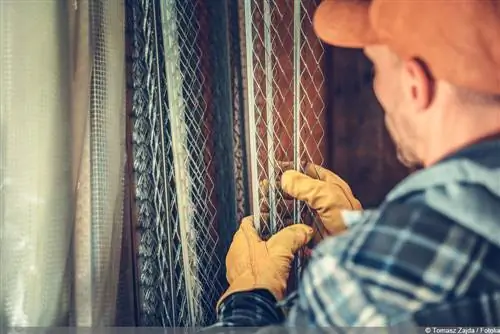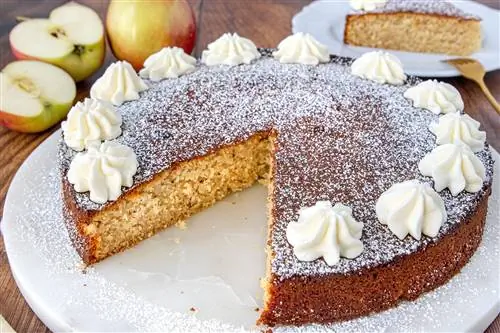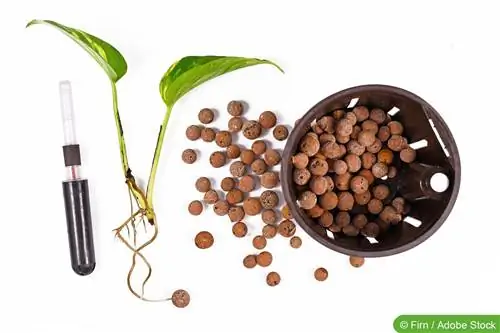- Author admin [email protected].
- Public 2023-12-17 03:39.
- Last modified 2025-01-24 12:45.
Compost is considered the brown gold of the garden. It is a completely natural and, above all, very effective source of nutrients for plants. It also contributes to sustainability in gardening. However, it takes some time until organic waste becomes compost. If you want to reach your goal much more quickly, you should think about a quick composter. And you can easily build it yourself.
Functional principle
Composting is part of the natural nutrient cycle and means the breakdown of organic materials such as garden and kitchen waste. In interaction with oxygen, soil organisms and microorganisms, this creates a substrate that is particularly rich in nutrients and can replace fertilizer in many cases. However, this takes some time. The process can be accelerated by using a rapid composter, which is also often called a thermal composter. This is a container that ensures higher temperatures during composting in a relatively compressed space - in a completely natural way by better storing the energy released during rotting. The higher temperatures can also speed up the composting process significantly. On average, it expires about twice as fast in a thermal composter.
Note:
A rapid or thermal composter is not an electric garden tool, but simply a container. For specific use in the garden, no power connection is required.
In principle, a quick composter is always a closed container, which, however, has access to the bottom and ventilation slots. Both play an important role. Worms and microorganisms, for example, enter the container through the bottom opening. The air slots in turn ensure the important oxygen circulation, which, among other things, prevents the organic material from starting to rot. Quick composters made of plastic are available commercially. But you can also easily build one yourself - for example from an old plastic barrel or from wood. A particularly elegant and, above all, long-lasting variant is a quick composter that is made of stones. It takes some time and effort, but it's worth it.
Quick stone composter
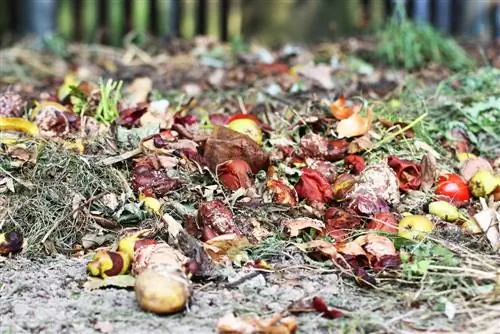
If you want to build a quick composter out of stone, you have to become a bricklayer to a certain extent. However, that sounds more complicated than it actually is. In principle, it's just a matter of building a kind of open pool out of stones, which is then closed with a wooden cover. The stones could also be stacked loosely on top of each other. However, if you connect them with mortar, the entire structure becomes more stable. The following materials and tools are required:
- sufficient stones of the same type (e.g. bricks)
- Ready-made mortar mix from the hardware store
- a large bucket for mixing the mortar
- a trowel
- a spirit level
- a rubber mallet
- a stirring stick or a mixing ladle
- Boards or wooden panel
- Square timbers
- Nails
- a hammer
- rammer or vibrator
- string
All of these materials are easily available at any hardware store. A tamper or vibrator to compact the soil can usually be rented there. Overall, depending on the size of the composter, you have to expect costs between 50 and 100 euros. The main way to save money is not to use new stones, but rather those that come from a demolished house, for example. Or you can use leftover stones from building your own house.
Tip:
If used stones have mortar residue, which is usually the case, these must first be chipped off. The best way to do this is to use a hammer.
Construction instructions
Our stone composter should have the shape of a basin that is open at the top and bottom. Typically it is rectangular or square. So all we have to do is build four sides or walls. Before the work can begin, however, it must first be clarified what size the composter should be. Last but not least, this also determines the material requirements. It is recommended to build it as compactly as possible. A length of 150 cm, a width of 60 to 70 cm and a height of around 80 to 100 cm should normally be completely sufficient.
Tip:
Even if you have a particularly large garden and therefore a lot of garden waste, the composter doesn't necessarily have to be large. After all, compost is always removed.
1. Step
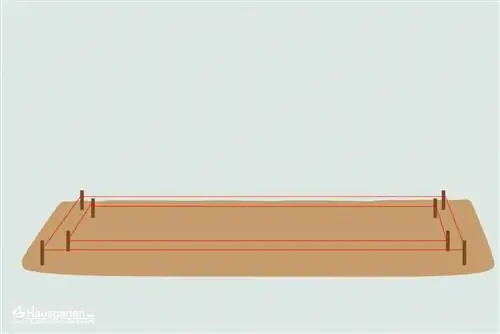
In a first step, the floor plan of the composter is marked out on the ground with ropes. It is ideal if two lines of string are drawn, namely the inside and outside of the walls. If the area on which the stones will rest is precisely defined in this way, it makes the next step easier.
2. Step
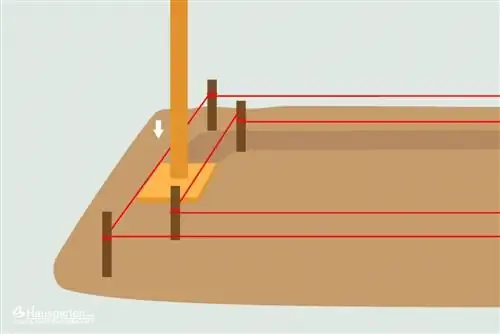
Typically, stone walls rest on a foundation. However, building such a foundation specifically for our small composter would be far too time-consuming. It is therefore completely sufficient to compact the area in question, i.e. tamp it down. It is important that only this area is compacted. The soil within the walls must remain loose, otherwise many microorganisms will find it very difficult to reach the garden waste that will later lie above. Compaction is best done with a so-called tamper. A small motor vibrator can also be used.
3. Step

The first row of stones is then placed on the compacted area. There should be a gap of around 2 to 3 cm between each stone. This distance serves as a ventilation slot. Each individual stone is tapped well with a rubber mallet. The attached cords are used to align the rows. The spirit level is used to ensure that the stones are approximately the same height after tapping.
4. Step

Before moving on to the next row of stones, the mortar must first be mixed with water. It's best to use ready-made mixes from the hardware store and follow the instructions on the packaging.
Tip:
Do not mix too much mortar at once, as the unneeded mixture can hardly be used for anything else and dries up relatively quickly.
5. Step
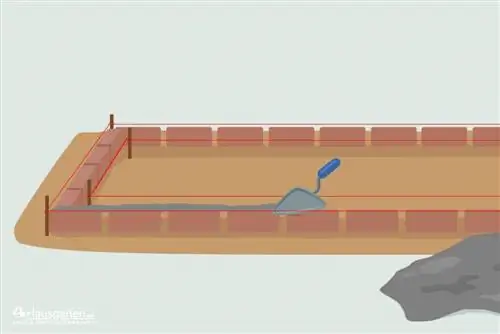
First, mortar is applied to the first row of stones with a trowel. The mortar layer should be about one to two centimeters thick. The stones of the second row are then placed on this layer and tapped into place. Again, a gap is left between the individual stones. Speaking of gaps: The stones in the second row act as bridges for the gaps in the first row. This principle then applies to all rows. The ventilation slots should therefore be offset across the entire area. Only the last, final row does not receive a slot. In this way, row by row is built up until the desired height is reached. Excess mortar that oozes out of the joints can simply be scraped off with a trowel. Every now and then you should use a spirit level to check whether the construction is still plumb.
Note:
It may be that individual stones have to be shortened so that a row can be completed. This shortening is done simply by knocking off parts of the stone with a hammer and leveling out uneven areas with mortar when inserting them.
6. Step
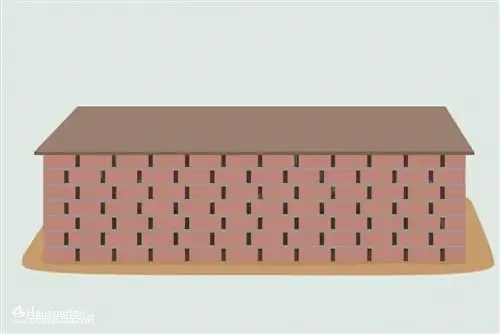
Once the composter basin has been built up, the lid still needs to be built. It can either be nailed together from individual boards and two square pieces of wood, or you can get a wooden board that fits the area. The lid should be large enough to rest securely on the top row of stones.
Location
The location for the homemade quick composter made of stone should be easily accessible from anywhere in the garden. Ideally it is sunny to partially shaded. However, it is much more important that the location is well ventilated. It should therefore not be exactly protected from the wind. At the same time, however, it is important to note that the wind does not necessarily blow towards the apartment or house, as this can result in a significant odor nuisance. Anyone who builds their quick composter should also keep in mind that it cannot be moved so easily: the choice of location must therefore be made carefully.




